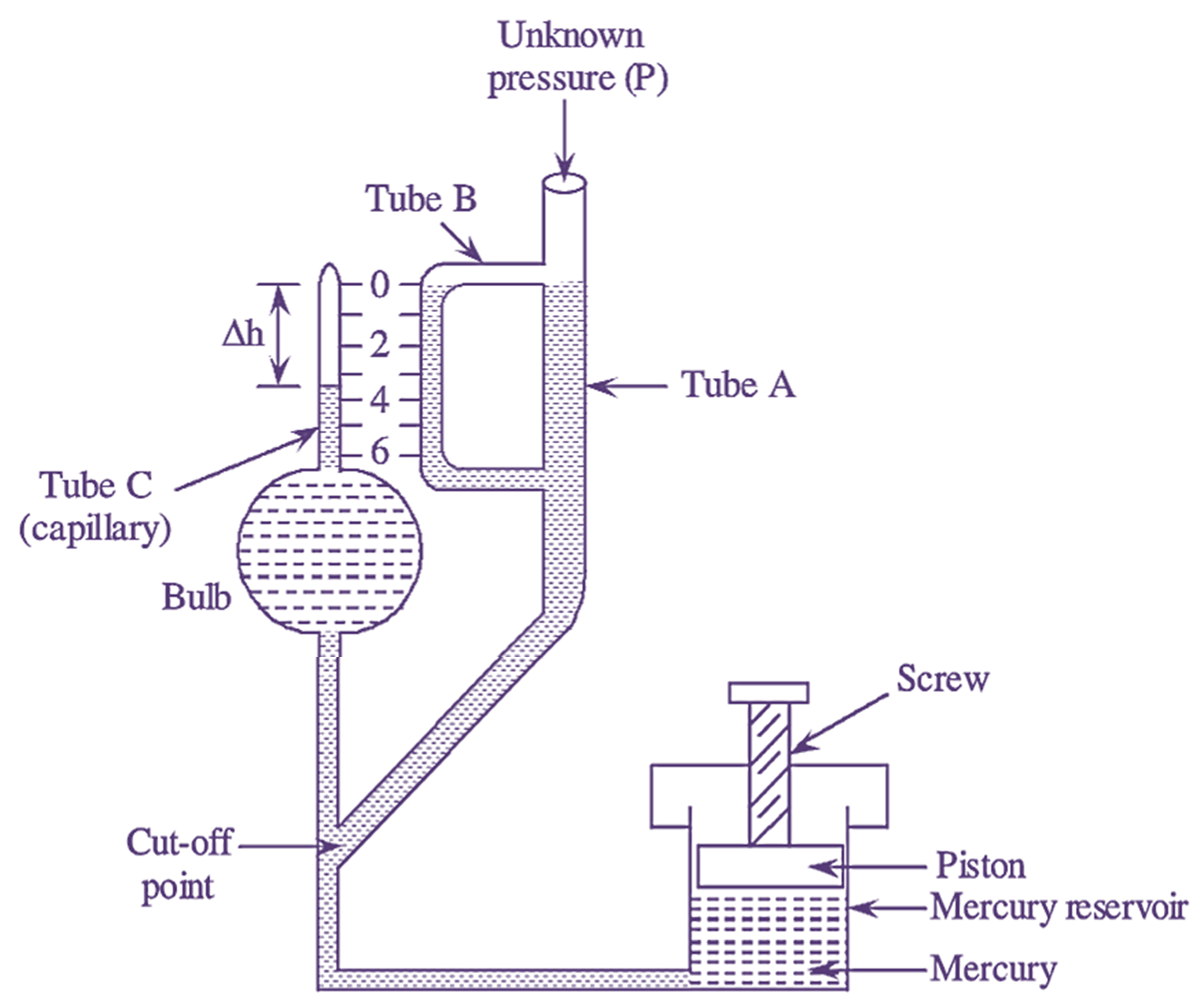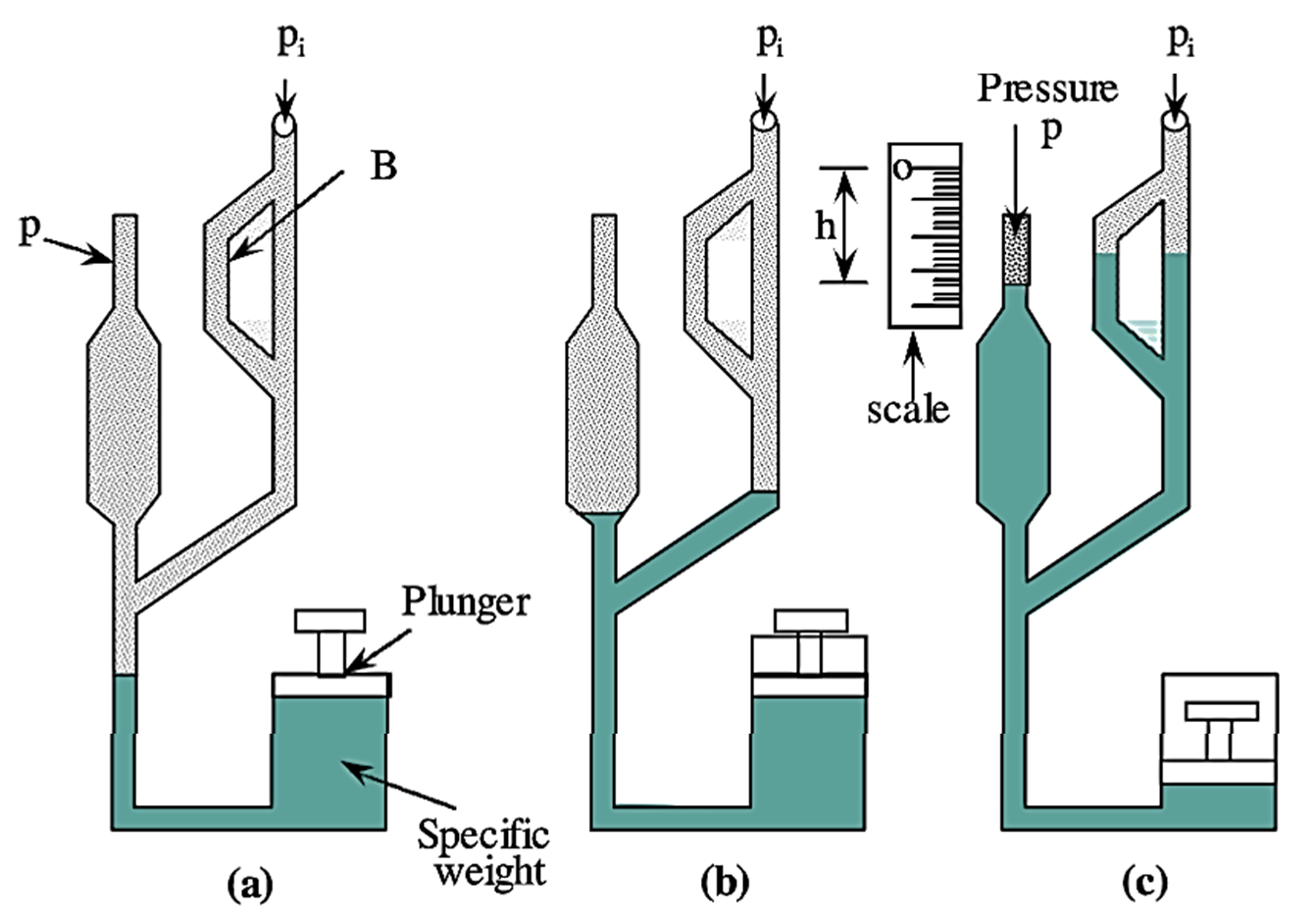McLeod gauge is a low pressure gauge and it is employed for the measurement of vacuum pressures.

Figure 1: McLeod Gauge.
Working Principle of McLeod Gauge
The operating principle of McLeod gauge is that, a gas of known volume is compressed to a smaller volume. This reduction in volume increases the pressure which is measured using a manometer.
Construction of McLeod Gauge
McLeod gauge is actually a modified form of mercury manometer. It consists of two limbs and a mercury reservoir. One limb consists of a large bulb over which a capillary (C) is connected. This capillary has a uniform bore of cross sectional area (A). The other limb consists of a capillary tube ‘B’ towards its left side. The length and area of this tube are equal to the length and area of the capillary tube ‘C’. The tube C and B are positioned at same height. Thus, the McLeod gauge consists of three tubes A, B and C. The tube B is taken as the reference column, The vacuum pressure to be measured is applied through tube A.
Working of McLeod Gauge

Figure (2): McLeod Gauge.
The pressure to be measured is applied to the reference capillary tube (B). The mercury level is first kept at a position as shown in figure 2(a) by drawing the plunger. Now compress the mercury level by pushing the piston to a position shown in figure 2(b). This compression of piston seals off the gas present in the bulb and capillary tube A. Again the piston is pushed until the mercury level goes tip to the zero mark in capillary tube B. This is shown in figure 2(c). The volume of the gas in the capillary tube is read by the scale. This becomes tite measure of applied vacuum.
According to Boyle’s law,
Pi . v = P At h
Where
Pi = Applied pressure
v = Gas volume (known)
At = Area of the capillary tube A
h = Height or difference between the mercury levels present in the capillary tubes A and B.
\[{{\text{P}}_{\text{i}}}=\frac{\text{ }\!\!\gamma\!\!\text{ }{{\text{A}}_{\text{t}}}{{\text{h}}^{2}}}{\text{v}-{{\text{A}}_{\text{t}}}\text{h}}\]
Thus, pressure is measured using the above equation. McLeod gauges are used to measure the pressure of gases about 10-4 torr.
Advantages of McLeod Gauge
- This is considered as a standard device for measuring vacuum, since the pressure can be calculated from the dimensions of the gauge.
- Its operation does not depend on the mixture of gauges.
- It is used as a reference standard in the calibration of other vacuum gauges.
- Corrections need not be applied to the McLeod gauge.
Disadvantages of McLeod Gauge
- It cannot be used to measure pressure of gases which doesn’t obey Boyle’s law.
- Continuous measurement is not possible with this instrument.
- The performance gets affected by the moisture